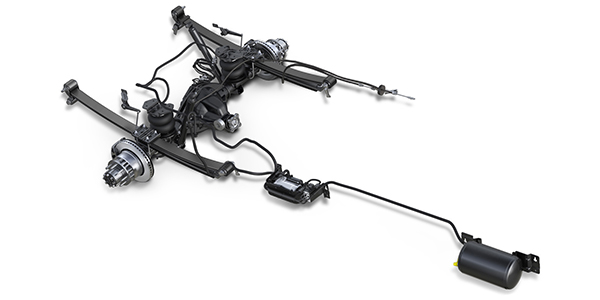 Models:
Models:
2015-’16 RAM 1500 Pickup
This bulletin applies to vehicles built on or after December 04, 2014 (MDH 1204XX) and on or before February 22, 2016 (MDH 0222XX), equipped with Air Suspension, 4-Corner (Sales Code SER).
Condition:
Customers may experience no ride height change with the truck in really cold conditions and they may also have a Malfunction Indicator Lamp (MIL) illumination. They may also notice the truck does not change ride heights when selected in cold weather. Upon further investigation, the technician may find that the following Diagnostic Trouble Codes (DTCs) have been set:
• C15A1-00 – Unable to Obtain Desired Ride Height.
• C1562-98 – Ride Height Air Pump Control – Component or System Over Temperature.
• C1562-92 – Height Air Pump Control – Performance or Incorrect Operation.
• C159F-92 – Air Suspension Reverse Valve 1 Control – Performance or Incorrect Operation.
• C15A0-92 – Air Suspension Reverse Valve 2 Control – Performance or Incorrect Operation.
• C155E-92 – Height Pressure Vent Control – Performance or Incorrect Operation.
• C15AA-00 – Air Leak During Vent.
Diagnosis:
Using a scan tool with the appropriate software, verify that all engine systems are functioning as designed. If DTCs or symptom conditions are present, other than the ones listed above, record the issues on the repair order and repair as necessary before proceeding further with this bulletin.
If the customer describes the symptom/condition listed above, or if the technician finds the DTC, perform the Repair Procedure.
Repair Procedure:
Install a battery charger to ensure battery voltage does not drop below 13.2 volts. Do not allow the charging voltage to climb above 13.5 volts during the flash process. If this flash process is interrupted/aborted, the flash should be restarted.
1. Reprogram the ASCM with the latest software. Detailed instructions for flashing control modules using the wiTECH Diagnostic Application are available by selecting the applications “HELP” tab.
2. Clear any DTCs that may have been set in any module due to reprogramming. The wiTECH application will automatically present all DTCs after the flash and allow them to be cleared.
Courtesy of Mitchell 1.













